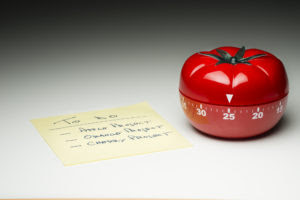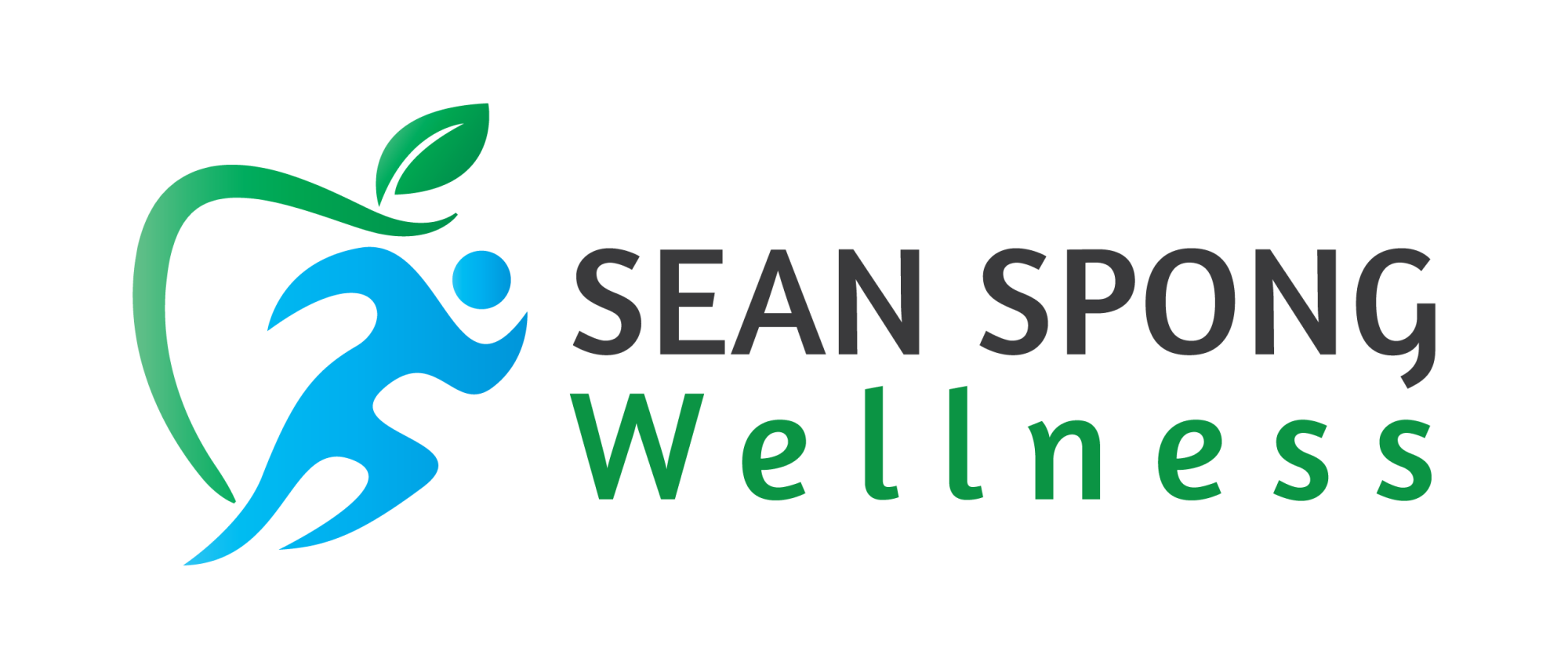October 2 , 2022
Sean Spong

Working from home can be a fantastic way to work more effectively with greater flexibly, less distractions and more freedom to choose when you work.
But all that extra freedom can also work against you. There can often be more distractions and a lack of structure can lead to increased procrastination with reduced focus and productivity.
This guide is packed with hints and tips to help you be as effective as you can be whilst working from home, building a structure and routine that works for you.
Just as importantly though it will help you build the habits and behaviors to improve your health and wellbeing as well which is only going to enhance performance too.
When do you work best?
This might be the first time you’ve had the opportunity to think about this. Ordinarily you start work when everyone else does or when you’re told to, do whatever work you need to do and then go home when you’re done. But now is your chance to make things work for you.
Give some thought to when you are most productive, when you feel most creative, when there are the least distractions?
For example you might find you are most creative first thing in the morning, or that those early hours are a great time to plough through a load of work, before everyone else is up and before emails start coming in. You might be someone who needs to start your day by exercising, then you can give your work your full focus. And then of course there are night owls, perhaps you’re someone who is happiest having a lazy start to the day and then working late into the night.
Everyone is different so give this some thought and start to get an idea of what might work better for you.
Block out your time
Once you’ve identified when you work best you can begin to form a schedule that works for you too, segmenting your time accordingly.
What you want is to block out the day, having times where you work on your most demanding tasks, which would be when you are most fresh or able to focus the best. Other tasks that require less concentration and brain power can be done at points in the day you have less energy or a reduced ability to concentrate.
This approach can be applied to the week as a whole too. You might find you aren’t quite firing on all cylinders on a Monday and need to build into the week, or that from Thursday onwards your energy drops. In which case the mid part of the week is blocked out for your most demanding or high energy tasks.
The point is you don’t want to be wasting your energy and concentration by doing mindless tasks at the wrong times. It’s easy to do this, rather than the challenging task on your list, you’ll go for the easy wins, the less demanding ones. But this means that the challenging tasks continue to get put off and put off.
Blocking out your time also helps prevent you from hopping from one task to another. Some people do well multi-tasking but for most it just means everything takes longer to complete, and staying focused on one task at a time is far more effective.
What about emails?
Responding to emails is one aspect of this we often don’t have as much control over, people often require or expect quick responses. But having constant notifications coming through is a huge distraction, especially if you’re working on a demanding task.
Instead schedule points in the day where you respond to emails, for example at the beginning, middle and end of the day. This means that at most people will only need to wait an hour or two for a response – which is perfectly fine for most people – and it means the rest of the time you are able to focus fully on the work you’re doing.
I wish it was all up to me!
It’s likely that your schedule isn’t going to be completely on your own terms, you’ll need to consider colleagues, deadlines, time differences and when family members are around.
But even with these additional considerations you can still alter things to help you be as productive as possible and perform your best work.
If for example you are trying to work from home and juggling children being around, early mornings and evenings might have to be when do your most demanding work, when they are in bed.
It might mean you have to split your working day up but if you can get up and get a chunk of work done, then grab an hour or two during the day, then another hour or two in the evening, you are still getting a working day in, just in a less regimented fashion.
This might not seem ideal, it’s actually not dissimilar to how a lot of great thinkers like Charles Darwin structured their day (admittedly they weren’t doing so because of kids). The standard 9-5 might be what most are used to but it doesn’t mean it’s the only way to work.
In his fantastic book ‘Rest’, Alex Soojung-Kim Pang describes the working practices of many great thinkers like Darwin and one common theme is that many found they were only able to work effectively for 4-4.5 hours a day. You might not think this sounds very much but working in this way they were able to produce a huge amount of quality work and that’s because those 4-4.5 hours were focused and scheduled at times they knew they worked best.
You might typically work for 7-10 hours a day, maybe longer but how much of that are you actually working effectively?
Research shows that the average office worker only actually works for less than 3 hours a day. The rest is spent eating, checking social media, looking for jobs etc.
How much high quality work could you do if you were able to work effectively for 4-4.5 focused hours a day?
Interestingly, a lot of the people Pang talks about found they worked best in 90 minute bursts. So they might get up and work for 90 minutes, take a break for an hour or two, perhaps go for a long walk, then do another 90 minute block, take a long lunch. Then work for a final 90 minutes and down tools in the early afternoon. Leaving them plenty of time for leisure.
It might be frustrating that you can’t work in the way you’d normally like to but it doesn’t need to stop you producing high quality work. Look at how you could schedule three or four 90 minute blocks throughout the day where you can focus fully and you might actually find it allows you to work more effectively than you were before.
Scheduling when you DON’T WORK is just as important
As you’re starting to get an idea of how you perform best across the week and each day, and you’ve begun to block out your time based on what tasks are going to be best suited where. Now you can look to plan your down-time.
It’s important that you don’t just stop when you can, or eat when you’re hungry or when you remember. Your breaks should be scheduled and adhered to just as much as the tasks you’re working on.
By taking regular breaks you’re protecting the quality of the work you’re doing.
You can also use your breaks to make use of low energy points in the day, and actually assist with your creativity. For example if you find you struggle to concentrate around mid-afternoon time, this might be a great time to stop and do a workout. Exercise doesn’t require you to concentrate in the same way as working so you’re getting mental relaxation.
Pang also talks in his book about Wallas’ theory of how the creative process works. There’s the preparation phase where we are working on the problem, then there’s the incubation phase where we work towards finding the solution. This incubation phase can take seconds or weeks and months depending on the particular problem. Interestingly, what Pang explains is that more and more research is demonstrating that performing automatic tasks – tasks that allow mental relaxation – can actually assist with the incubation phase. Leading to the illumination phase which is where we come up with the solution, and then finally the verification phase where we fit it all into place.
You’ve probably experienced this where you’ve been driving, ironing or out for a walk and you randomly come up with the answer to something you’ve been struggling with. It seems random but perhaps this isn’t as random as we think. It could actually be as a result of you creating an environment that assists with the incubation process.
Which means exercising or simply getting out for a walk not only gives you a break from your work, improving circulation, blood flow to the brain and increasing your general exercise levels. It could also be a great way to improve the work you produce too. Assisting with that incubation phase and helping you come up with solutions to the tasks you’re working on.
Keep moving
For both health and productivity it’s a good idea to avoid sitting for longer than an hour without getting up and moving. You can set alerts on some watches that will alert you if you haven’t moved for 50 minutes which reminds you to get up and walk for a minute or two. You can use this time to grab a drink or get some fresh air.
A fantastic productivity tool that assists with this is the Pomodoro technique. You work in 30 min blocks – 25 minutes work with 5 minutes rest – then taking a longer break when needed after three or four cycles.

You can buy actual Pomodoro timers or download timers that show on your computer screen and you’ll quickly realize how much time you usually waste. The idea is to set a task for each Pomodoro block. When you see that the timer is at 18 minutes and you’ve yet to properly focus on that task because of checking email, switching from task to task, you’ll appreciate the need to focus properly on that specific task and how much time you usually waste.
It’s recommend when using the Pomodoro technique that regardless of what point you are at with your work, when the 25 minutes is up that you stop and move away from your desk. Even if you are mid-sentence, leave it and move away.
Our instinct is to complete what we are doing out of fear that interrupting the flow will mean we’ll forget what we are doing. This is usually why we’ll end up not moving for hours on end because we’ll then just move onto the next thing. But actually, leaving that sentence unfinished will make it easier to pick back up when you return, and it’s very unlikely you’ll forget what you were doing.
It’s therefore encouraged that you use your breaks to get away from your work space to get a drink, go to the toilet, get some fresh air and then you return ready to go again.
Ticking all the boxes
The schedule you’re now putting together compliments when you work best, works around challenges, utilizes breaks and rest periods, all of which is going to help work at your most productive.
Don’t be afraid of experimenting with your schedule, try out different approaches.
Try exercising first thing and then taking a break in the afternoon to go for a walk. Or see if it works better getting up early and getting straight on with work, then taking a longer break over lunch to exercise and eat. You might prefer to do all your work in one go and then properly switch off. The key thing is to make it work for you.
Plan each day
Starting your working day by performing this simple habit will have a huge impact on your daily productivity. Each day begin by reviewing the tasks you need to complete, ordering them in terms of priority and then schedule them into your day.
This will be far easier now you’ve got a better idea of which tasks will be most suited to different times of the day. Mapping out your day like this makes a significant difference.
If you’re driving somewhere you don’t just get in the car and start driving and hope you end up there, you plan your route.
Think of your working day exactly like this. Don’t just sit down and start working and hope you get everything done that you need to. Plan it out to make sure that you do.
Plan when you’ll work, when you’ll take breaks and when you’ll exercise then write it down. Either in a full day diary or on a blank sheet of paper.
That’s your script for the day, now all you need to do is follow it.
Other helpful tips:
Get dressed for work
There are small things you can do which can really help when working from home. For example getting dressed in work clothes when you are working. This might seem unnecessary given that you aren’t seeing anyone but it’s a way of telling yourself it’s time to work.
One downside of working from home is that your home becomes somewhere you relax and now somewhere you work too. You get this blurring of the lines.
Doing something as simple as getting dressed in your normal work clothes to do your work, and then putting on lounge wear when you’re done can really help create that separation between work and leisure.
Have a designated work station
Similarly try to have a set place that you work. It might be tempting to work on the sofa but by doing this your sofa stops being somewhere you relax, and also becomes a work station. So where possible try to have set places you work and set places you relax.

If this isn’t an option then try having specific things that you do which clearly define the end of the working day. For example when you finish working you get changed and go for a walk, or do a short meditation, stretch, whatever works for you.
Much like getting into work clothes tells you it’s time to work, this tells you it’s time to relax, that it’s time to close the laptop and stop working for today.
Avoid endless grazing
A big obstacle when working from home is avoiding eating all day, it’s really easy to find yourself in the kitchen cupboards or fridge at every opportunity.
There’s a few things you can do to help with this. If possible try not to work in the kitchen, and if this isn’t an option, try not to have food out on show. The old ‘out of sight – out of mind’ thing does really help.
Something else you can do which ties in with regular breaks is make sure you eat proper structured meals and snacks at set times. Not only is this going to help your concentration but it’s going to help keep you feeling more full and less likely to need to keep snacking. Oh and drink plenty of water, it’s super important for our brains to function properly and most of the time we think we are hungry, we are in fact just thirsty.
Set up the next day
This next tip is an easy one to overlook but is a really powerful way of helping you switch off and ensuring you work well the next day.
Take five minutes at the end of each day to review what you’ve done, score your productivity and to set out your tasks for the next day.
So go back through your to-do list and look at what you completed and what you didn’t. Add the tasks that you didn’t get done to your to-do list for the next day, along with anything else you need to do. You can treat this as a bit of brain dump which will also help you switch off.
Give yourself a score out of ten for your productivity and maybe make a couple of notes on what you could do differently the next day.
Work with your phone out of reach
Constantly being distracted by your phone is a really easy way of getting nothing done.
Where possible work with it out of the room or at least out of reach so that you aren’t tempted to keep picking it up. You want to make sure that when you’re working you are concentrating fully, use your down time later in the day to be on your phone.
Obviously if you need your phone for work that’s different, but try to only use it for calls and any messages you need to send, and don’t get pulled down time thieving rabbit holes on social media.
Walk and talk
This is one of my favorite techniques to help increase exercise levels and productivity in one.
What you do is where possible, schedule your phone calls at times where you can take a walk. It means you aren’t wasting time on your phone whilst sat at your desk, your day isn’t constantly interrupted by calls and it’s a great way of getting some exercise at the same time.
Once you’ve stopped, stop!
As we’ve said, working from home means that the boundaries between work and leisure are already blurred.
Avoid the temptation to do another hour, or have one last check of your email before bed.
It’s really important to protect your down-time to ensure you switch off and relax properly and can therefore start work the next day feeling refreshed. If you typically work later than you should, you’ll likely wake up tired, and therefore won’t start the next day doing your best work. Be disciplined enough to step away from your work when you know you should and get up the next day ready to hit the ground running.
It strangely requires more discipline to stop when you should, but it’s the best way to ensure consistent, productive work.
It would be great to think that working from home could actually allow you to work more effectively and have a better work life balance, and there’s no reason why it shouldn’t.
Build a schedule that enables you to work at your best but one that prioritizes rest and leisure time as well. You’ll soon appreciate that the two go hand in hand.
If you’ve got any other tips that you’ve found have worked for you I’d love to hear them. Fire me an email seanspong@seanspongwellness.com






0 Comments